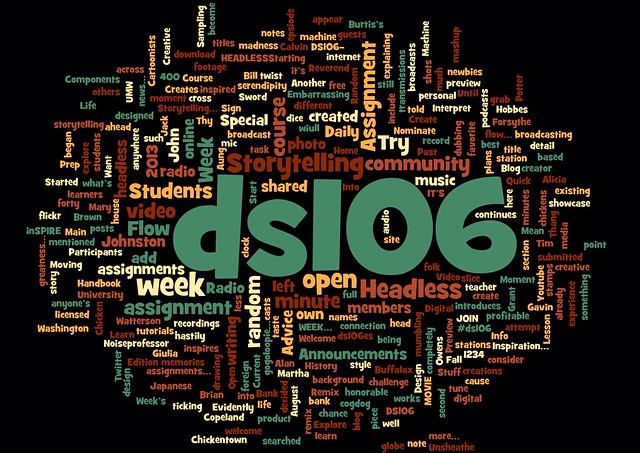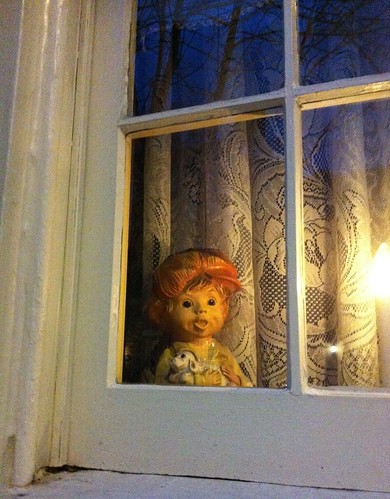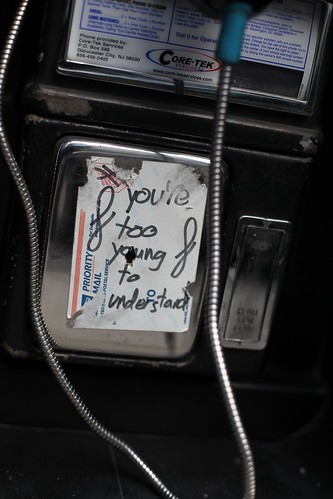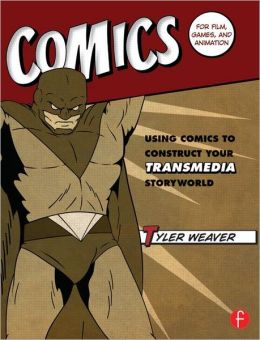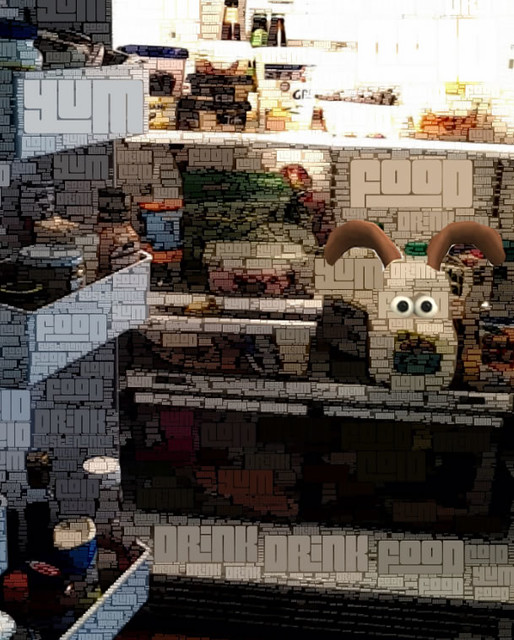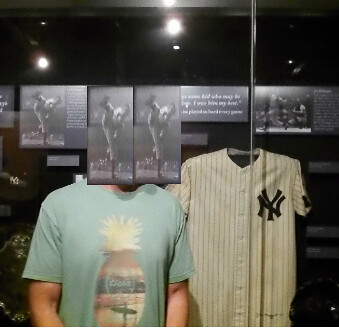This weekend, a video conversation was posted in which the main facilitators/organizers of DS016 (Martha Burtis, Alan Levine, and Jim Groom) were being interviewed for an award DS016 is receiving around open learning. I was curious because I actually don’t know much about the history or intent of DS106, other than it is a wonderful way to engage in digital storytelling and creativity. I decided to put the video into Vialogues, so that I could comment and make notes as I listened to the three discuss the ethos underpinning the creation and nurturing of DS106, and its history.
I liked a lot of what I heard, from the open nature of the assignments to the desire to push the boundaries of digital storytelling as far as they will go, to understanding that the Web offers both limits and unlimited potential for creative minds, to the current state of educational organizations dipping their toes into online learning — only to replicate traditional learning. They imagine a digital humanities hub of work and exploration, with directions for learning yet unknown. I also liked how they connected this to agency and digital identity.
One point of the rich discussions that struck out at me, though, and I am not sure why I keep pondering it.
All three consistently refer to DS106 as a “course,” and that now makes sense to me — the site and idea was launched at a university, and has been and is used in college classes, and adapted for other university experiences. And – duh — there is the Headless Course that I am taking part in. Of course, it is a course. But I admit: I never knew that it was actually a college course and I never conceived of it that way, and listening to Jim, Martha and Alan use that word “course” to define the experience now has me rethinking DS016. It situates me differently inside the DS106.
And I am not sure why that bothers me slightly, and yet it does.
Perhaps it is because they are pretty adamant that DS106 is NOT a MOOC. And maybe it isn’t. But, well, maybe it is. My idea of a collaborative, open learning space is how I think about MOOCs in the best possible ways (acknowledging that the term is being taken over by corporate interests), and the DS106 experience feels a lot like that, for me. Maybe this is one of those times when words and language are really important when trying to explain something to the outside world, and hearing that word “course” conjures up a certain way of thinking about the University experience.
I suspect the three of them wish to change that kind of thinking with DS106, so that learning experiences are not a lecture, four-walls, textbook experiences. Maybe they need a new word there.
Peace (in the thinking),
Kevin
